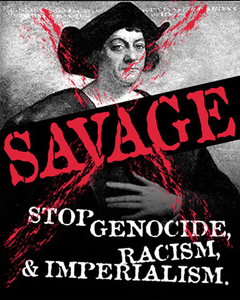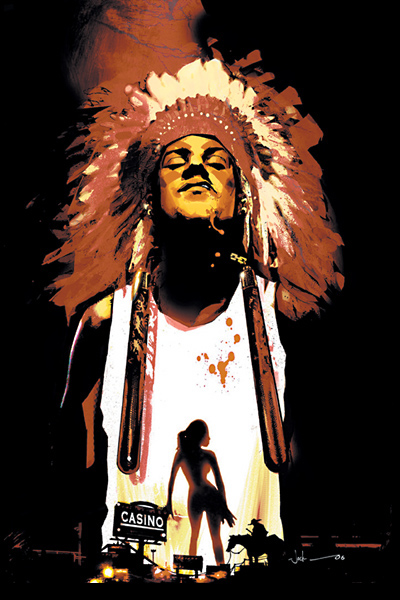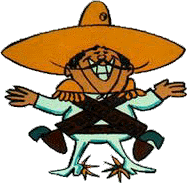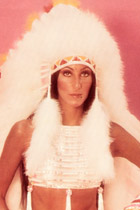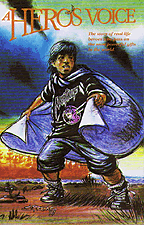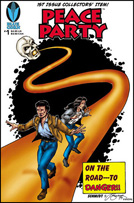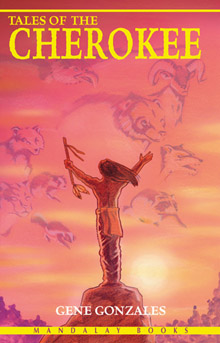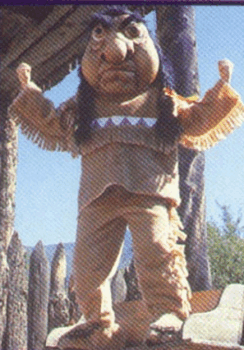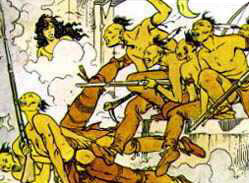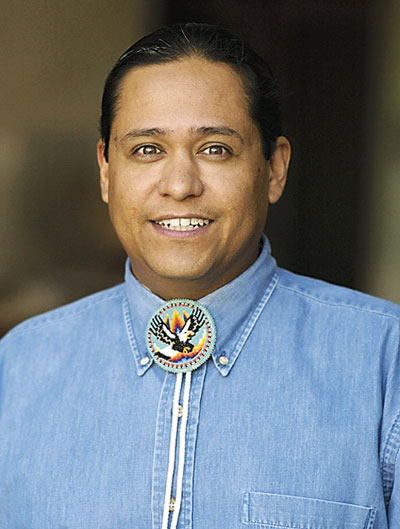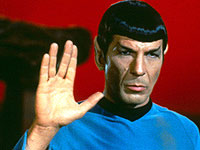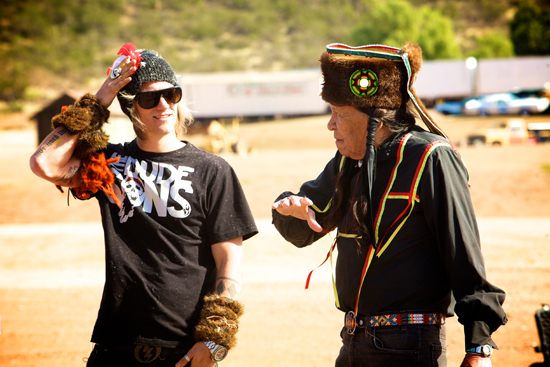The Myth of "America"
By Dahr Jamail and Jason Coppola
Among the first of these is that of Christopher Columbus. In school we were taught of his bravery, courage and perseverance. In a speech in 1989, George H.W. Bush proclaimed: "Christopher Columbus not only opened the door to a New World, but also set an example for us all by showing what monumental feats can be accomplished through perseverance and faith."
This systematic violence was aimed at preventing "Indians from daring to think of themselves as human beings. (The Spaniards) thought nothing of knifing Indians by tens and twenties and of cutting slices off them to test the sharpness of their blades.... My eyes have seen these acts so foreign to human nature, and now I tremble as I write."
This message comes from our leaders, thinkers, and tastemakers...filters through our schools and the media...and becomes our cultural mindset. "We" brought civilization to this untamed wilderness. "They" were savages who deserved what they got. We're the heroes; they're the villains. White Christians good, brown heathens bad.
(Note for Geno and his many goofball aliases: The paragraph above is the message Americans tell themselves as part of the myth-making process. It is not what *I* believe. Get it, dummy? Or do I have to mock your cluelessness some more?)
Examples of myth-making
This myth is so ingrained that it's difficult to challenge. "Educated" apologists for America are quick to defend it whenever the subject arises. You can almost predict their responses if you try. For instance:
Claim: Indians weren't savages.
Response: Indians fought and killed each other long before the Europeans arrived.
Counter-response: Europeans fought and killed each other too--in much greater numbers in more long-term wars. If that's the measure of savagery, Europeans "win."
Claim: Americans committed genocide.
Response: Most Indians died from disease.
Counter-response: Columbus set up a slave-trading system before disease began killing large numbers of people. From the start, the European intent was genocidal in nature.
Myth-making at work
We see this myth-making process at work in many if not most of our "culture wars." For instance, immigration and mosque-building: "They" are trying to take "our" country from us. Ethnic studies and whitewashed textbooks: "They" are trying to tell "our" children that the myth isn't true. Welfare spending and healthcare reform: "They" are trying to redistribute "our" wealth to non-Europeans. Abortion and gay marriage: "They" are trying to turn America into a non-Christian state.
(Again, Geno, this is the myth-making process, not what *I* believe. Get it yet, dummy?)
Nor is this solely a rear-guard effort by frightened conservatives/libertarians/teabaggers. Liberals buy into the myth or, if they're politicians, say they do. For instance, President Obama talks about settling the West and won't utter the word "genocide." Politically speaking, he can't or won't give his opponents more fodder to claim he's un-American.
With their talk-show media machine, conservatives are doing a good job of dominating the debate these days. Obama and other weak-willed Democrats are unwilling or unable to fight back. Obama spoke once about our racial troubles during his campaign and has avoided the subject since then. He knows how angry white Americans will turn any racial incident into a debate on who belongs here and who doesn't.
Myths can't last
Fortunately, the long-term trends are working in favor of change. Millions of educators and activists are chipping away at America's myths. Younger Americans are more liberal, tolerant, and aware than older ones. In a few decades, whites will be a minority whether they like it or not.
Unless conservatives start burning as well as banning books, the facts aren't going anywhere. It's a documented fact that Columbus and his men killed or enslaved Indians. That Euro-Americans took an inhabited land from its people by force. No amount of spinning will change the fundamental truth: that the myth is a lie.
For more on the subject, see Those Evil Europeans and This Ain't No Party, This Ain't No Disco: A Columbus Day Rant.
